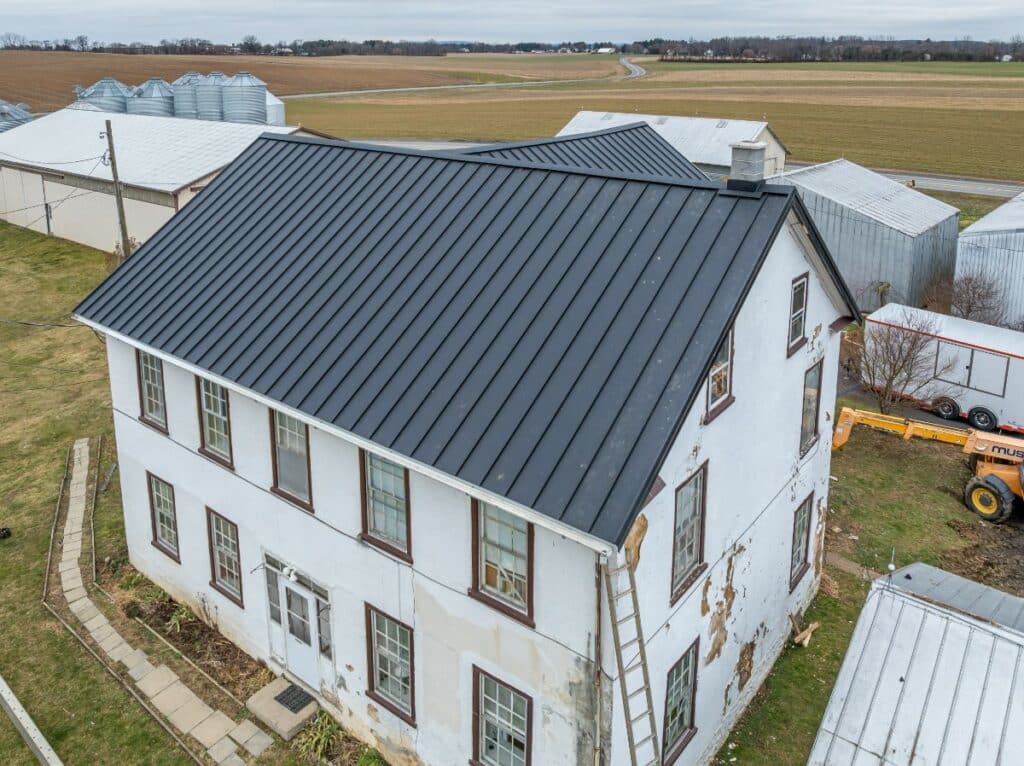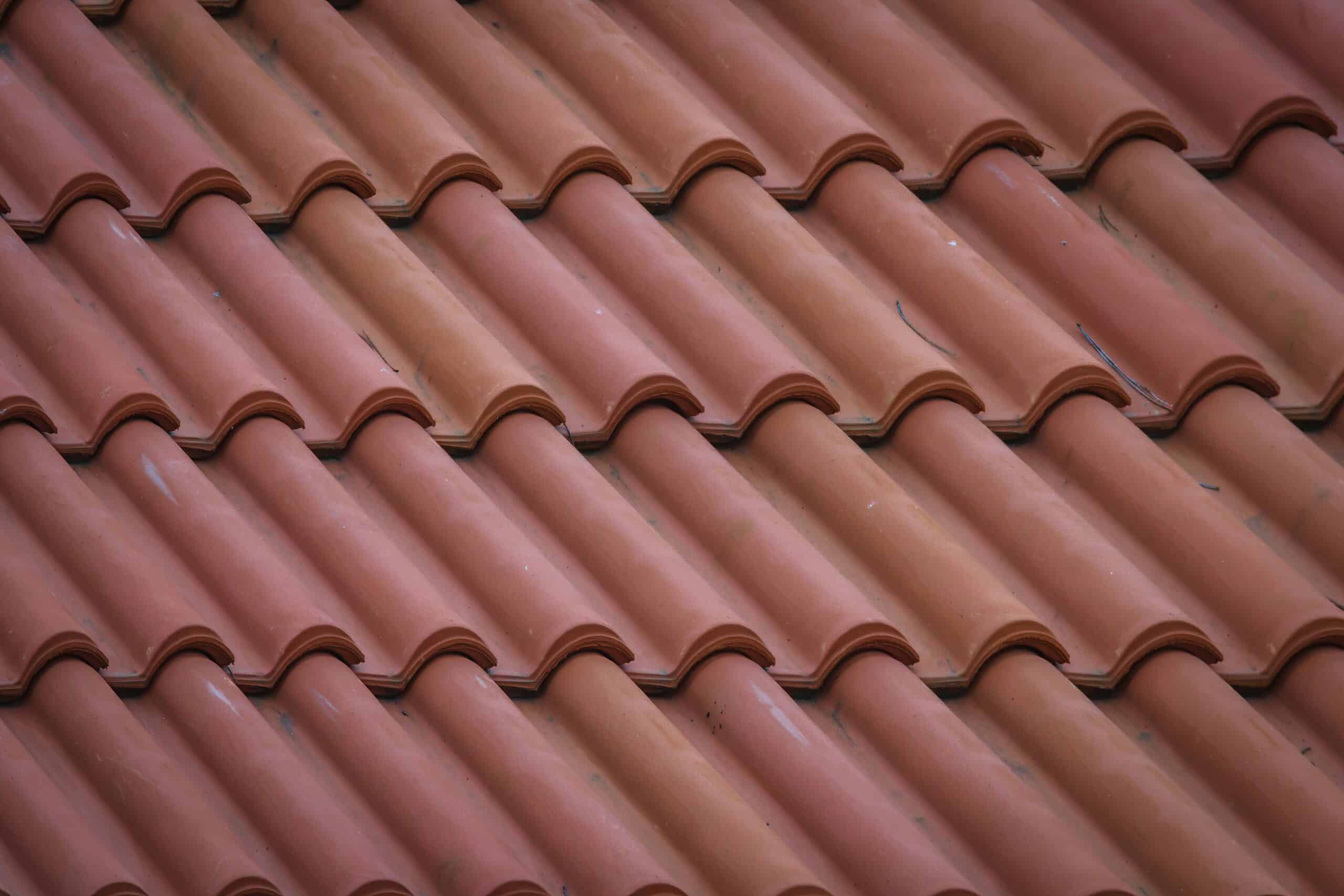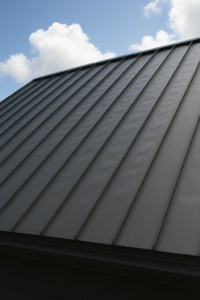You’ve probably heard that metal roofs cost more than shingles. But what if paying more today actually saved you thousands tomorrow? This isn’t just a “metal roof vs shingle cost” debate, it’s a long-term strategy for many homeowners who care about durability, low maintenance, and resale value.
Quick Takeaways
- Metal roofing systems have a higher metal roof cost upfront but win over time with fewer roof replacements and far less maintenance.
- Asphalt shingles are cheaper at first, but warranties can mislead, and installation costs plus frequent repairs drive up the long-term roof cost.
- Over a 50-year period, standing seam metal roofs may actually cost less than an asphalt shingle roof, especially when factoring in inflation, labor costs, and energy efficiency.
What Homeowners Usually Get Wrong About Roof Pricing
Why cost vs. value is the real question.
Most homeowners look at immediate roof cost and stop there. That’s a mistake. A metal roof seems expensive per square foot today, sure. But replacing an asphalt shingle roof once (or twice) in 50 years adds up fast. It’s not just metal roof vs shingle cost, it’s future value vs upfront savings.
Upfront Cost Comparison: Metal Roof vs Shingles
Let’s look at the numbers:
- Asphalt shingles cost around $600 per square. A square, in roofing terms, is a 100-square foot area.
- A standing seam metal roof lands at about $1,100+ per square foot.
- A screw-down or exposed fastener metal roof is usually closer to $800 per square foot.
Installation costs and labor costs are higher for standing seam roofs because of the precision required. But simpler roof pitch and design can narrow that gap. For homes without a complex roof layout, standing seam metal becomes much more cost-efficient.
Lifespan Expectations: How Long Do These Roofing Options Last?
Two asphalt roofs or one steel roof?
Shingle roofs typically last 25 to 30 years, but asphalt shingles tend to degrade faster under heat, heavy rain, or poor installation.
Compare that with a steel roof or standing seam roof, which easily reaches 50+ years. And it doesn’t rot, peel, or split. Once the coating shows wear, you can repaint, not replace.
The Warranty Illusion: What Roofing Contractors Don’t Always Tell You
Why a “50-year warranty” often means 30.
Architectural shingles labeled “lifetime” are often identical to 30-year shingles. Roofing contractors can pay extra for a so-called 50-year coverage, but it rarely includes labor or transfer rights.
Bottom line: you might think you’re buying peace of mind, but what you really get is a marketing gimmick. That’s why understanding roofing materials and their true lifespan is more important than the number printed on the brochure.
Maintenance: Minimal Maintenance vs. Frequent Repairs
Low maintenance wins in the long run.
Shingle installation is quicker and cheaper, but asphalt roofs need more frequent repairs. After 20 years, shingles absorb heat, adhesives fail, and strong winds can blow off tabs.
Metal roofing materials? They’re built for less maintenance. Even exposed fastener roofs require fewer fixes than a typical asphalt roof. A good metal roof installation means you can skip the headaches that come with shingles flying loose after every thunderstorm.
Resale Value, Insurance, and Curb Appeal
Why metal roofs add curb appeal and reduce insurance stress.
Shingle roofs may not tank your appraisal, but they don’t boost it either. A metal roof installation—especially standing seam metal—adds noticeable curb appeal and increases resale value.
Insurance agents also know what to expect. One of our clients reported skipping the home inspection step just by mentioning they had a metal roof!
The Inflation Factor: Metal Roof vs Shingle Cost Over Time
Today’s savings won’t survive tomorrow’s prices.
Before COVID, some roofing professionals could install asphalt shingles for $300 per square. Now it’s almost double. Add inflation and future material costs to the mix, and that budget-friendly asphalt shingles cost won’t look so great during your next roof replacement in 25 years.
By comparison, a single metal roof today—even if you finance it—can cost less over time than two full asphalt roof replacements.

Energy Efficiency and Tax Credits
Metal roofing = better energy efficiency + potential tax benefits.
Metal roof panels in light shades often meet Energy Star standards, helping reduce heating costs and energy bills. Unlike traditional shingles or wood shingles, metal reflects heat.
Some homeowners also qualify for federal tax credits by installing energy-efficient roofing material, which sweetens the deal even more.
Is a Metal Roof Worth It?
If you’re staying long-term, yes.
For short stays, stick with composite shingles or architectural shingles.
But if you plan to stay in your home for 20+ years, install metal roofing now and skip the hassle of future replacements.
Metal shingle roofs or standing seam metal roofs offer low maintenance, long lifespan, and better protection from the elements, not to mention fewer insurance headaches and better resale value.
Which Roof Should You Really Choose?
Metal and shingle roofs each have a place in the roofing project conversation. But if you’re playing the long game? A standing seam metal roof or even an exposed fastener metal roof will likely outperform any asphalt shingle roof in total roof cost and performance.
You might pay more today, but your future self (and your future budget) will thank you. If you’re looking for a metal roofing company in Allentown, give us a call for a free quote!





